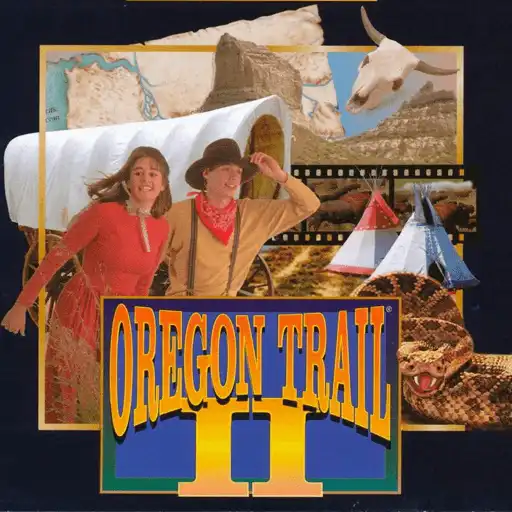
Oregon Trail II Online - Play Free & Unblocked | WePlayDOS
Oregon Trail II captures the spirit of adventure and education, allowing players to explore the challenges of pioneering life in the American West. Players can now experience Oregon Trail II online unblocked, making it easier to enjoy this classic game without the need for older computer systems. Play for free directly in your browser!
From choosing a wagon party to managing resources, each decision influences the journey's outcome, making for engaging gameplay that combines fun and learning.
The game builds on the success of its predecessor, enhancing gameplay with new features and educational content. Users can easily immerse themselves in the action of hunting, fishing, and navigating through varied terrains.
With its user-friendly interface and point-and-click controls, Oregon Trail II attracts both nostalgic gamers and new players alike.
As the gaming world evolves, the legacy of Oregon Trail continues to influence educational games today. Its mix of strategy, resource management, and history offers a unique experience that remains relevant in modern gaming culture.
Key Takeaways
- Oregon Trail II can be played online with ease.
- The game combines educational elements with engaging gameplay.
- Its legacy continues to influence modern educational games.
Overview of Oregon Trail II
Oregon Trail II is a classic educational game that expands on its predecessor, offering players a rich blend of history, strategy, and adventure. This section explores its history, gameplay mechanics, and educational impact.
History and Development
Released in 1995, Oregon Trail II is a sequel that adds new features to the original game from the 1970s. It was developed by MECC (Minneapolis Educational Computing Corporation) to provide a more interactive experience.
Players can choose travel years between 1840 and 1860, which adds historical context not present in earlier versions.
The game was designed to reflect the challenges faced by pioneers during westward expansion. Improved graphics and sound quality offered a more immersive experience, captivating both children and adults.
As a follow-up, it benefited from feedback about the original game, making it more user-friendly and engaging.
Gameplay Mechanics
Oregon Trail II uses simple point-and-click controls, allowing players to manage their trip effectively. Players must make crucial decisions about supplies, travel pace, and when to hunt or fish.
The game includes various challenges, such as diseases and accidents, that require players to choose from multiple options to proceed.
The interface is user-friendly, making it easy for players to navigate. It features mini-games for hunting and fishing, adding variety to the journey. Players get to engage with their wagon train and interact with other groups, enhancing the overall adventure experience.
Educational Impact
Oregon Trail II is recognized for its educational value, teaching players about American history and the challenges of pioneer life. The game incorporates key historical facts and real-life events, like dealing with diseases such as dysentery and cholera.
This unique blend of education and entertainment keeps players engaged while learning important lessons.
Teachers began using it in classrooms to enhance students' understanding of westward expansion. By immersing players in this historic journey, they gain insights into resource management and decision-making.
Overall, the game has left a lasting impact on educational gaming.
How to Play Oregon Trail II Online
Playing Oregon Trail II online is a fun way to experience this classic game. It offers users a mix of adventure and strategy as they guide their wagon through challenging landscapes. Here’s how to find and set up the game for an exciting journey.
Finding the Game
To play Oregon Trail II online, the first step is to find a suitable website. Many platforms host this classic game and allow users to play directly in their web browsers.
Some popular options include Play Oregon Trail II Online.
These sites usually provide easy access, with no downloads required. Just look for a “Play Now” button or similar prompt on the homepage. Users should ensure the site is secure and trustworthy before starting. Checking recent user reviews can also help confirm the site’s reliability.
Setting Up the Game
Once the game is found, setting it up is simple. After clicking to play, a new browser window or tab will open with the game loaded.
Users may need to adjust settings, like the sound and game speed, based on personal preferences.
It’s important to familiarize oneself with the controls. Oregon Trail II mostly uses point-and-click mechanics, allowing users to navigate the interface easily. The game often includes short tutorials or guides for beginners.
Players should take a moment to explore options like inventory management, which is crucial to survival.
Starting Your Adventure
With the setup complete, players can start their adventure. They usually begin by selecting their party, planning their route, and gathering supplies. Making wise choices during these initial steps is key to a successful journey.
Players will encounter various challenges like crossing rivers or hunting for food. Decision-making plays a vital role in how the adventure unfolds. Mini-games for hunting and fishing are also included to break up the main gameplay.
As players progress, they can track their journey and adjust their strategies along the way. This balancing act keeps the gameplay engaging and dynamic, making each trip unique.
The Legacy of Oregon Trail in Gaming
The Oregon Trail has left a significant mark on the gaming world, influencing various aspects of game design and player experience. Its unique blend of education and entertainment has shaped how games engage audiences today.
Influence on Modern Games
The Oregon Trail, especially in its original DOS form, set a precedent for educational games. It showed that games could teach history and survival skills while being fun.
Many modern games incorporate similar mechanics, using story-driven gameplay and decision-making to engage players.
Titles in genres like simulation and adventure often echo the choices players made on their journey. Games such as Life is Strange and Farming Simulator utilize this concept where player decisions shape the narrative.
The design of character management and resource allocation from Oregon Trail has become a staple in modern RPGs. Players now frequently strategize how to manage resources while developing character relationships, reflecting the classic elements present in Oregon Trail.
Nostalgia and Cultural Impact
Many gamers recall their experiences with Oregon Trail fondly. This nostalgia offers a deep connection to the past.
The game is more than entertainment; it's a cultural touchstone.
Schools used the DOS version to teach students about American history and pioneer life, embedding it in the educational system.
Today, it connects multiple generations through shared memories and experiences.
Merchandise, memes, and references in pop culture keep the game alive. It reminds players of simpler times and brings a smile, illustrating the game's lasting effect.
Oregon Trail has become an iconic symbol of educational gaming, persisting in society’s collective memory.
Frequently Asked Questions
What is the difference between Oregon Trail 1 and 2?
"Oregon Trail 1" generally refers to the classic versions from the 1980s and early 1990s, like those for Apple II or early DOS, including "The Oregon Trail Deluxe." "Oregon Trail II," released in 1995, was a major upgrade. Key differences include:
- Graphics and Sound: Oregon Trail II featured significantly improved SVGA graphics, animations, and richer sound effects and music compared to the more basic visuals of earlier versions.
- Depth and Realism: Oregon Trail II offered more detailed character creation (including skills and professions), more complex resource management, a wider array of trail events, more historical information, and interactions with historical figures. Players could also choose different starting years, which affected trail conditions and events.
- Gameplay Mechanics: It introduced new mini-games for activities like fishing and hunting, more nuanced decision-making for challenges like river crossings, and a more interactive map. The ability to talk to people along the trail for advice or trade was also expanded.
- User Interface: Oregon Trail II used a point-and-click interface, typical for Windows games of that era, offering a more intuitive experience than the menu-driven or keyboard-controlled interfaces of its predecessors.
What was the biggest killer on The Oregon Trail?
In the actual historical Oregon Trail, diseases were the most common cause of death. Cholera was particularly devastating, spreading rapidly due to contaminated water sources. Other serious illnesses included dysentery, measles, smallpox, and typhoid fever. Accidents, such as drownings during river crossings or mishaps with firearms or wagons, were also significant dangers. While the game famously features "dysentery" as a common cause of death, it reflects this historical reality where disease was a constant threat to the pioneers.
Is there a new version of The Oregon Trail?
Yes, there is a modern version of The Oregon Trail developed by Gameloft. It's available on Apple Arcade, Nintendo Switch, PC (via Steam and the Microsoft Store), Xbox, and PlayStation consoles. This version updates the classic gameplay with new graphics, storylines, and more inclusive character representation, while still retaining the core challenge of the journey west. While this article focuses on "Oregon Trail II," the Gameloft version is the most recent official iteration of the franchise.
When was Oregon Trail 2 released?
Oregon Trail II was released in 1995. It was developed by MECC (Minnesota Educational Computing Consortium) and published for Windows and Macintosh computers, serving as a significant graphical and gameplay upgrade to the earlier versions of The Oregon Trail.



